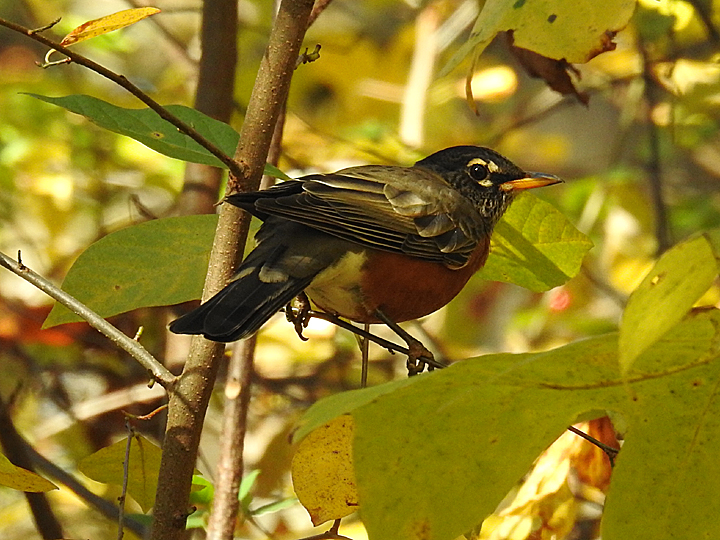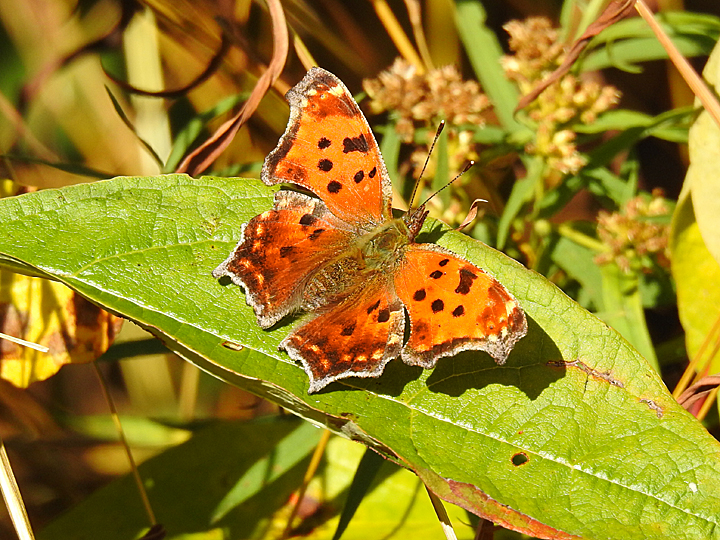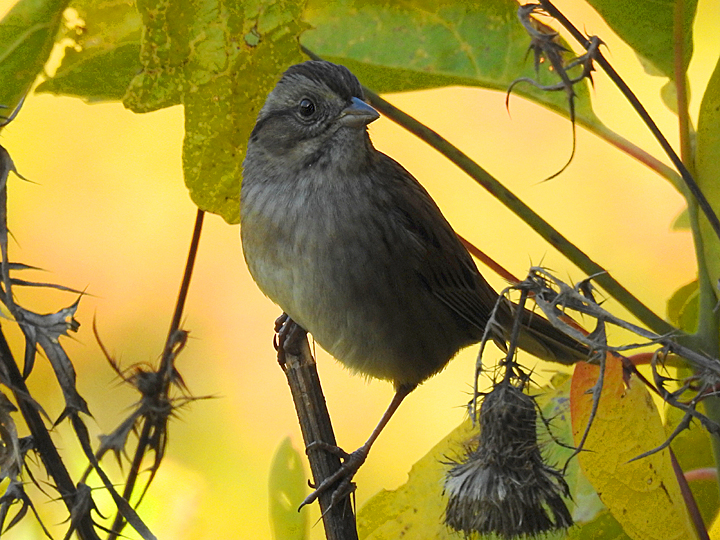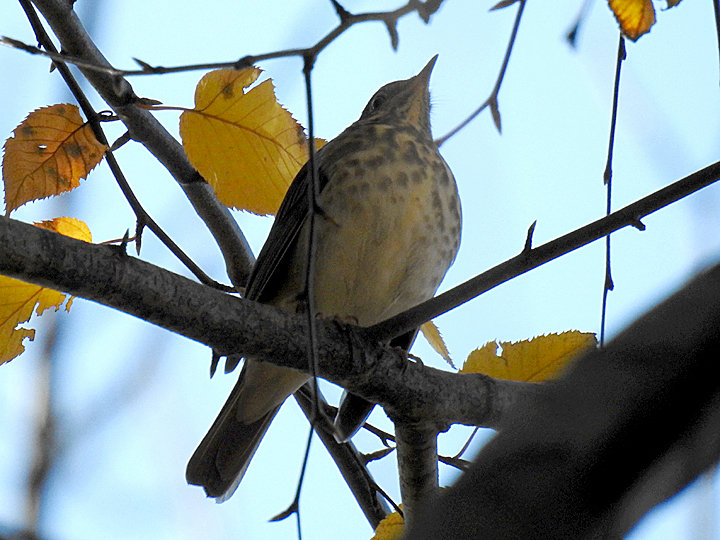Mariton: Lovely Fall Images
by Tim Burris, Preserve Manager. Photos by Carole Mebus.

An American Robin on a yellow background.
The Autumn colors at Mariton are very lovely right now. Some trees have lost their leaves, but the woods are aglow with yellows and oranges. It misted on our Tuesday Nature Walk, but that seemed to make the colors softly muted. We saw a few Blue-headed Vireos along with Ruby-crowned Kinglets and Golden-crowned Kinglets.

Eastern Comma Butterfly
Carole kept her camera cased on Tuesday, but returned on Thursday with blue skies to take these photos. This Eastern Comma butterfly posed for her on a leaf in the meadows. This species will overwinter as an adult in the fallen leaves. It will emerge early in the late Winter before there is much color in the landscape. Then females will lay eggs. A few other butterfly species also overwinter as adults in leaves. So, now you have a reason to be lazy and keep a few leaf piles along the edge of your yard or flower beds.

White-throated Sparrow
We get excited in the Spring when bird species return from the South to take up a Summer residence locally. In the Fall, there are a few bird species that return from the North to spend the Winter in our region. The White-throated Sparrow is one that we forward to seeing again. It has a winsome song that can be heard all Winter long. It sounds mournful as Fall transitions to Winter. Then the same song sounds bright during Winter’s depths. When they first return in the Fall they seem shy and hide in the underbrush and fields. They only sing a few notes of their song. After they have been back for a few weeks, they begin to perch on the tops of plants and feed in the open under bird feeders. They also begin singing their full song.

Hermit Thrush
Another migrant from the North is the Hermit Thrush. This bird has one of the prettiest songs in my opinion, but it is usually silent during its Winter vacation here. When I am very still, I can watch them skulking on the forest floor looking for food. They often pump their tail, raising it quickly to let it slowly fall back down. This little cue can help one identify it from some of the other Winter thrushes. This weekend may be one of the most vibrant, but there are still more colors to come.
